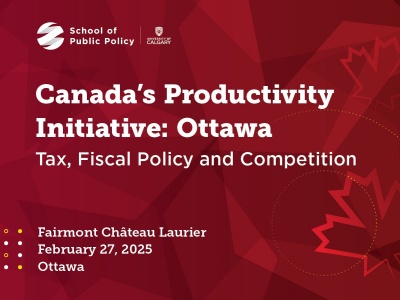Advice to the Premier on the Mandate of the Royalty Review
The NDP’s election platform stated that it will “establish a Resource Owners’ Rights Commission to report to the new Premier and the Legislature within six months on measures to promote greater processing of Alberta’s energy resources, and to ensure a full and fair return to the people of Alberta for their energy resources.” It also goes on to claim that the previous PC government “failed to earn Albertans’ full and fair value for their oil and gas by maintaining one of the world’s lowest oil royalty rate structures, even when prices were very high.” This commentary only addresses the proposed royalty review.
Having committed itself to a royalty review, the new government should carefully consider the structure and mandate of the Commission and learn from the lessons that can be drawn from both the process of the 2007 Royalty Review Panel and its report. In this commentary, I suggest some essential elements of the mandate, scope, and time frame of the forthcoming review. My perspective is that of a public finance economist—not a resource economist, much less an industry representative—but since Alberta’s royalty regime is a major component of the provincial government’s fiscal framework, this broader and comprehensive perspective, which did not receive adequate attention in the 2007 report, is of fundamental importance to any proposal to adjust the royalty regime.
The Mandate—What Question to Ask?
The mandate will determine the range of issues and policies that are considered by the Commission and the framework that it will adopt in analyzing them. The 2007 Royalty Review Panel’s approach was based on a single question—“whether Albertans are receiving a fair share from energy development through royalties, taxes and fees…” Viewing royalty policy as a matter of ‘fairness’ was an extremely problematic and in the end, futile way to analyze the structure of royalties. First, fairness is a philosophical or ethical question and there is no analytical framework that can answer that question in ultimately quantitative terms acceptable to all. To ask what is the ‘fair’ share of the net income or economic rent generated by oil and gas development in the province is and indeed was an invitation for subjective posturing. For example, some might argue that the people of Alberta, as owners of the resource, are entitled to and should therefore receive 100 per cent of the economic rents. However, the royalties and taxes that would have to be adopted to collect 100 per cent of the resource rents would create such strong disincentives to invest in exploration and production that most of the resources would be left in the ground and virtually no revenues would be generated. 100 per cent of nothing is nothing.
Instead of some ill-defined and subjective notion of the fair share, royalty and tax policies should be determined by their impact on the level of investment and production in the oil and gas sector, which generates income for Alberta workers, and on all the revenues (royalties, taxes, fees) received by the government as a consequence of oil and gas development.
Because of the emphasis on “fair share” in its mandate, the Royalty Review Panel ignored an extremely important issue that was never addressed in their report—Who ultimately bears the burden of the royalties and taxes that are levied on the oil and gas sector? In other words, when royalties and taxes on the oil and gas sector are increased, whose incomes are reduced? Perhaps the Panel simplistically thought that higher royalties and taxes would come out of the shareholders’ dividends or out of the bonuses and pay packets of the top executives of the firms. But is this the case? A study by Busby, Dachis, and Dahlby (2011) found that the royalty increases announced in the 2007 New Royalty Framework reduced the number of bonus bids for new licenses and leases by 25 per cent.[1] This reduction in exploration activity was reflected in the marked slow-down in investment activity in the province, already weakened by the slump in oil and gas prices cause by the global recession. The decline in investment and production activity reduced the employment opportunities and earnings for workers throughout the oil and gas sector. Consequently, a substantial portion of the burden of the royalty increases in the 2007 New Royalty Framework was ultimately borne by workers through lower earnings and employment opportunities. This is why the royalty increases announced in the 2007 Royal Framework were as unpopular in the Tim Horton’s in Rocky Mountain House as they were in the corporate towers in Calgary. Blue collar workers in the oil and gas sector sensed that the higher royalties and taxes on the oil and gas sector meant fewer employment opportunities and lower wages and salaries.
What to Study
It would be nice if we had a definitive estimate of the extent to which higher royalties are borne by workers in Alberta through lower wages and employment opportunities. We don’t. But that does not mean this issue should be ignored in the discussions over royalty policy. It also means that one of the first orders of business for the Commission should be developing studies of the effects of higher royalties and taxes on investment, production and employment income, as well as the revenues for the public sector in Alberta.
In estimating revenue effects of royalty increases, it is important to include the effects on all sources of revenue to the federal, provincial and municipal governments. Beyond the royalties that are directly collected by the Government of Alberta, there are revenues from bonus bids for licenses and leases, the federal and provincial corporate income taxes and the property taxes that are levied by the provincial and municipal governments. The taxes that municipalities levied on linear property (such as pipelines) and machinery equipment amounted to $1.3 billion in 2013, and most of this is collected from the oil and gas industry. The indirect effects of higher royalties that result in reductions in employment incomes and reductions in provincial personal income taxes should also be considered. In many instances, higher royalties will cause offsetting reductions in corporate income taxes, bonus bids, municipal taxes, and possibly personal income taxes so that the net increase in provincial revenues may be much smaller than the apparent direct effects of higher royalties.
Furthermore, the Commission should also take into account how the provincial government’s carbon pricing policy will interact with the royalty and taxation system. Normally, any incremental costs including those of a levy or tax would be deductible against income for the oil sands royalty and corporate tax purposes.
The Commission should adopt a comprehensive measure of the amount of revenue that is collected by various levels of government from the oil and gas sector in Alberta and analyze the effect of higher royalties and taxes on investment, production, and employment income, as well as the additional net revenues for the public sector in Alberta.
Time Frame
The 2007 Royalty Review Report was a rush job. The Panel did not seem to have enough time to develop and analyze the impact of its proposed changes in royalties and taxes on investment, employment, and total revenues. Assembling the required data, engaging experts in focused research, and reflecting on the information gathered from background studies and consultations requires time. The Commission should also issue an interim report indicating its approach to the mandate and providing background material that will help inform public discussion as the Commission proceeds with its analysis. One of the consequential effects of the royalty review is the nearly impossible-to-quantify reduction in investment owing to uncertainty raised by the existence of the royalty review. This means the review be done expeditiously as well as comprehensively.
The Commission should have a mandate of at least one year to conduct its investigations, gather input from the public and industry representatives, and prepare its report and recommendations.
A Proposed Mandate
Given the above, I would suggest that the Commissions mandate be stated in terms of the following question:
Is the royalty and taxation system striking the right balance between facilitating income generating activity for Albertans from oil and gas production and producing revenues to finance public services in the province?
[1] Colin Busby, Benjamin Dachis, and Bev Dahlby “Rethinking Royalty Rates: Why There is a Better Way to Tax Oil and Gas Development” Commentary No. 333, C.D. Howe Institute, Toronto, September 14, 2011. http://www.cdhowe.org/pdf/commentary_333.pdf


